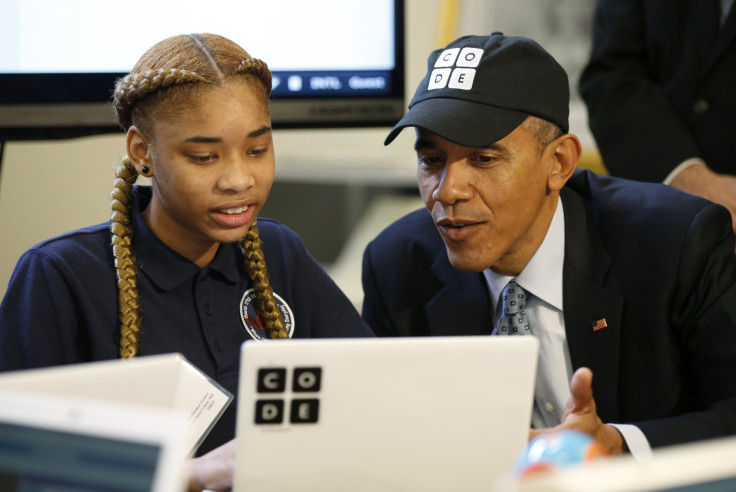Coding For Kids: Teaching Girls, Minorities To Program Important For A Diverse Tech Workforce

The United States needs to find roughly 1 million more tech workers in the next five years, and they can’t all be rich, white males. With computer science workers increasingly in demand, tech advocates have begun to reach out to demographics that historically haven't considered coding as a profession to ensure low-income Americans, women and minorities don't get left behind.
To create a new generation of programmers, tech-education leaders say they have to start 'em young. In recent years, more organizations have dedicated themselves to teaching kids to code, enlisting supporters from Prince to SpongeBob SquarePants and using tools like animated games, photo filters and real-life rewards to encourage young people to program. While reaching some demographics can be difficult, experts said helping children code is crucial.
“It’s the new literacy. It’s the new media,” said Elliot Soloway, a computer science engineering professor at the University of Michigan in Ann Arbor. “Coding is about giving kids the new pencil and paper, it’s giving them the new typewriter, the new tool to say things that they couldn’t say before.”
The first hurdle is getting children to see computer science as a viable career option. Black Girls Code, a national advocacy group, tries to do this by showing low-income students that coding can be a way out of poverty. Software developers made an average annual salary of $93,350 in 2012, according to the Bureau of Labor Statistics.
Kids need to learn computer science early in order to get the experience they need to work in the field later on, said Chris Bradfield, founder of the national advocacy group Kids Can Code. They can’t wait until college to get interested in coding, he said, because they won’t know enough by the time they graduate; employers don’t want to hire people they have to teach basic skills [to]. “Starting young means you have more time to work at it,” Bradfield said.
Coding isn’t a mandatory subject in U.S. schools like it is elsewhere. In the United Kingdom, students start learning coding basics at 5 and two programming languages at 11. Chinese students have to take computer science courses in order to graduate from high school. Starting in fall 2016, Finland will make programming part of the basic primary school curriculum.
In the U.S., the responsibility to attract and teach children to code falls on independent groups. One way Code.org does this is by offering a 20-step “Frozen” movie puzzle users have to code to play. VidCode, an online interactive software, enables users to program digital photo filters. Bradfield tells his students about coding video games in an effort to make them understand that what they’re learning could become a career later on.
“This iPhone or this iPad that you’re interacting with … isn’t a mysterious piece of magic that just appeared in your hands,” Bradfield said. “Engineers designed it, and engineers made it, and everything that it does somebody had to figure out how to make.”
Once kids care about coding, it’s another challenge to keep them interested. Stereotypes make this tricky, said VidCode cofounder Alexandra Diracles. Girls typically lose interest in math and science during middle school, and only a fifth of programmers are female. Silicon Valley companies released data showing that in 2013 only 2 percent of their tech workers were black and 3 percent were Hispanic, according to USA Today.
“We can't keep creating products leaving a whole gender out of the conversation,” said Girls Who Code founder Reshma Saujani. She added, “We have to start empowering girls in technology earlier so they choose to pursue computer science majors and careers."
If the coding for kids movement is successful, girls, low-income students and minorities will play important roles in helping the quickly expanding technology industry grow, Soloway said. “By the underrepresented folks finally getting a voice, the creativity that’s going to be unleashed is unparalleled,” he said.
© Copyright IBTimes 2024. All rights reserved.












